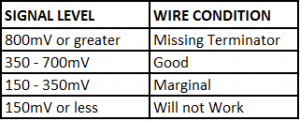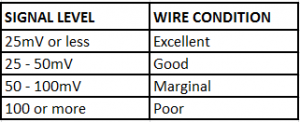TOOLS AND EQUIPMENT USED IN FOUNDATION FIELDBUS (FF) SEGMENT CHECK
- Tools and equipment needed should be in good condition and must be checked by Instrument Supervisor prior to use in the construction area.
- Sets of Instrument Hand Tools
- Common Hand Tools
- Test Lead with Test Probe, Clips and Distribution Terminals
- 100/205 Megger Tester
- Field Diagnostic Monitor FBT-6
- Digital Multi-Tester
- Two-Way Communication System
- DC Power Supply Regulated 24 V DC Variable
- These includes but not limited to:
- Document Process Calibrator (DPC) 754
PROCEDURE OF FOUNDATION FIELDBUS SEGMENT CHECK
- Special tools shall bear valid calibration certificates traceable to a national standard indicating calibration validity and periodically (at least 6 months) checked by a third party laboratory testing facility.
- Review all references such as Approved for Construction drawings, layouts and technical scope of work, work permit requirements, and work procedures.
- Manpower, equipment, tools and other logistics are ready and prepared for works.
- Identify area classification and verify hazardous areas to be considered during construction activities considering precautionary measures in using tools, equipment and materials to be affected, making sure that all these items are suitable and appropriate as per the area requirements.
- Mnufacturer service representatives or vendor personnel should be scheduled accordingly.
- Safety aspects shall be discussed on daily basis to include associated installation care needed.
- Ensure that the work area is clean and free from foreign objects.
Wiring Check
- Ensure that the field wiring is completed, terminated and that all field spurs (but not the devices).
- Remove only the connector to the field wiring; it is not necessary to remove the connector to the H1 card (DCS). Removing the connector to the field wiring isolates the field wiring from the H1 card and power supply, and enables you to make the resistance and capacitance measurements.
- Check the resistance: Measure resistance on the H1 segment conductors at the removed Relcom terminal block connector coming in from the field using Megger Tester.
- (+ signal to – signal) > 50 K ohms
- (+ signal to shield) > 20 M ohms
- (- signal to shield) > 20 M ohms
- (+ signal to instrument ground) > 20 M ohms
- (shield to instrument ground) > 20 M ohms
4. Check capacitance: Measure the capacitance on the H1 segment conductors at the removed Relcom terminal block connector coming in from the field using Document Process Calibrator.
- (+ signal to – signal) = 1µF (0.8µF to 1.2µF)
- (+ signal to shield) < 300nF
- (- signal to shield) < 300nF
- (+ signal to instrument ground) < 300nF
- (- signal to instrument ground) < 300nF
- (shield to instrument ground) < 300nF
If everything checks out to be within these limits, the basics wiring for your segment is good.
Voltage Check
- Check if the segment power connector is connected.
- Check the voltage at the power supply, H1 host interface, and individual field devices using Document Process Calibrator.
- The voltage level between the entire positive (+) and negative (-) signals output / input wires must be the following:
-
- (+) to (-) Signal (Output) – Expected = 18.6 – 19.4 VDC
- (+) to (-) Signal (Output) – Expected = 25 to 28 VDC
Signal Check
- The signal level is measured from the top of one signal peak to the bottom of the next peak (peak-to-peak) usingFBT-3 or FBT-6 fieldbus monitor.
- The signal level is measured from the top of one signal peak to the bottom of the next peak (peak-to-peak) usingFBT-3 or FBT-6 fieldbus monitor.
- Signal level is impacted by the number of terminators attached to the segment, trunk and spurs cable lengths, and series resistance of current device.
Noise
- Noise can interfere with the fieldbus signal causing communication to be corrupted or missed. Improperly grounded shield wires and routing fieldbus cables near other cables (particularly high power cables) are typical sources of fieldbus noise.
- Fieldbus communicates within a frequency bank of 7.8 KHz to 39.1 KHz. Fieldbus devices are required to reject signals within the field bus frequency band that are less than 75mVpp.
- FBT-3 and FBT-6 both measure average and peak noise. High average noise indicates the noise source is constantly present. Common causes of high average noise include a poorly grounded shield and routing of fieldbus cable near and parallel with other signal carrying cables or AC power cables.



so much superb information on here, : D.